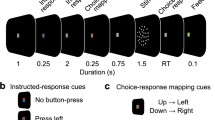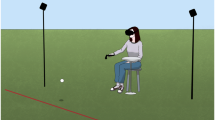Abstract
Volitional movement is a hallmark for human behavior. How such well-intended concatenation of behaviors is achieved remains, however, elusive. In the present study, we hypothesized that visual memory of past motion trajectories may be used for selecting future behavior. Based on our memory prediction hypothesis, we designed motor planning experiments that generate new path when given a fixed goal by using only visual memories of past motor trajectories. We conducted simulation experiments and applied the motion planning algorithm for a humanoid robot. The results of our studies suggest that new motor trajectory for a fixed goal can be generated on learned visual memories of past behaviors.
Access this chapter
Tax calculation will be finalised at checkout
Purchases are for personal use only
Preview
Unable to display preview. Download preview PDF.
Similar content being viewed by others
References
Valero, F., Mata, V., Besa, A.: Trajectory planning in workspaces with obstacles taking into account the dynamic robot behaviour. Mechanism and Machine Theory 41, 525–536 (2006)
Ata, A.: Optimal trajectory planning of manipulators: a review. Journal of Engineering Science and Technology 2, 32–54 (2007)
Gasparetto, A., Zanotto, V.: A new method for smooth trajectory planning of robot manipulators. Mechanism and Machine Theory 42, 455–471 (2007)
Yamashita, Y., Tani, J.: Emergence of functional hierarchy in a multiple timescale neural network model: a humanoid robot experiment. PLoS Computational Biology 4, e1000220 (2008)
Hawkins, J., George, D., Niemasik, J.: Sequence memory for prediction, inference and behaviour. Philosophical Transactions of the Royal Society B: Biological Sciences 364, 1203–1209 (2009)
Friston, K.: Learning and inference in the brain. Neural Networks 16, 1325–1352 (2003)
Clark, A.: Whatever next? predictive brains, situated agents, and the future of cognitive science. Behavioral and Brain Sciences 3, 1–86 (2012)
Kohonen, T.: Self-Organizing Maps. Springer, New York (2001)
Author information
Authors and Affiliations
Editor information
Editors and Affiliations
Rights and permissions
Copyright information
© 2012 Springer-Verlag Berlin Heidelberg
About this paper
Cite this paper
Park, JC., Yoo, J.H., Lee, J., Kim, DS. (2012). Apparent Volitional Behavior Selection Based on Memory Predictions. In: Huang, T., Zeng, Z., Li, C., Leung, C.S. (eds) Neural Information Processing. ICONIP 2012. Lecture Notes in Computer Science, vol 7663. Springer, Berlin, Heidelberg. https://doi.org/10.1007/978-3-642-34475-6_58
Download citation
DOI: https://doi.org/10.1007/978-3-642-34475-6_58
Publisher Name: Springer, Berlin, Heidelberg
Print ISBN: 978-3-642-34474-9
Online ISBN: 978-3-642-34475-6
eBook Packages: Computer ScienceComputer Science (R0)




